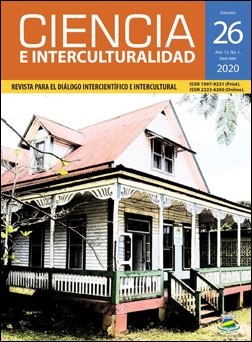Comparison of white shrimp growth under two study conditions, optimal salinity and salinity close to zero
DOI:
https://doi.org/10.5377/rci.v26i01.9890Keywords:
Farming, Shrimp, Up growth, SalinityAbstract
In Nicaragua, the cultivation of white shrimp (Litopenaeus vannamei) is a hydrobiological product that contributes significant foreign exchange to the country's economy. The success obtained in this area is due to the fact that businessmen and producers have encouraged, expanded and technified the productive areas meant to shrimp farming. However, the growth of this industry has been affected by the incidences of viral and bacterial diseases, causing problems at a social and economic level in the field, which is why throughout the evolution of shrimp farming and the diseases that they affect it, in parallel studies it have been carried out in order to find alternatives to minimize the impact of pathogens on the farming, finding shrimp growing inland; practice that it is carried out in many developed countries and in which similar results to traditional production are presented. The purpose of the study was to compare the growth of white shrimp from traditional farming systems and inland farming, through the implementation of two treatments that consist of subjecting organisms to optimal salinities (T1) and salinities close to 0 (T2 ), being this the only variant in the management of the crop during a period of 49 days and with a density of 27 org / m2, obtaining results of final weights of 17.75 grams for T1 and 12 grams for T2, revealing that the Physical and chemical factor effects did not affect shrimp growth during the study.
Downloads
725
HTML (Español (España)) 1147
EPUB (Español (España)) 146
XML (Español (España)) 146
RESUMEN(AUDIO) (Español (España)) 120
ABSTRACT(Audio) 128
Downloads
Published
How to Cite
Issue
Section
License
Copyright © (URACCAN)

This journal is licensed under a Creative Commons Attribution-NonCommercial-NoDerivatives 4.0 International License.
This license allows others to download the works and share them with others, as long as their authorship is acknowledged, but they can not be changed in any way nor can they be used commercially.




